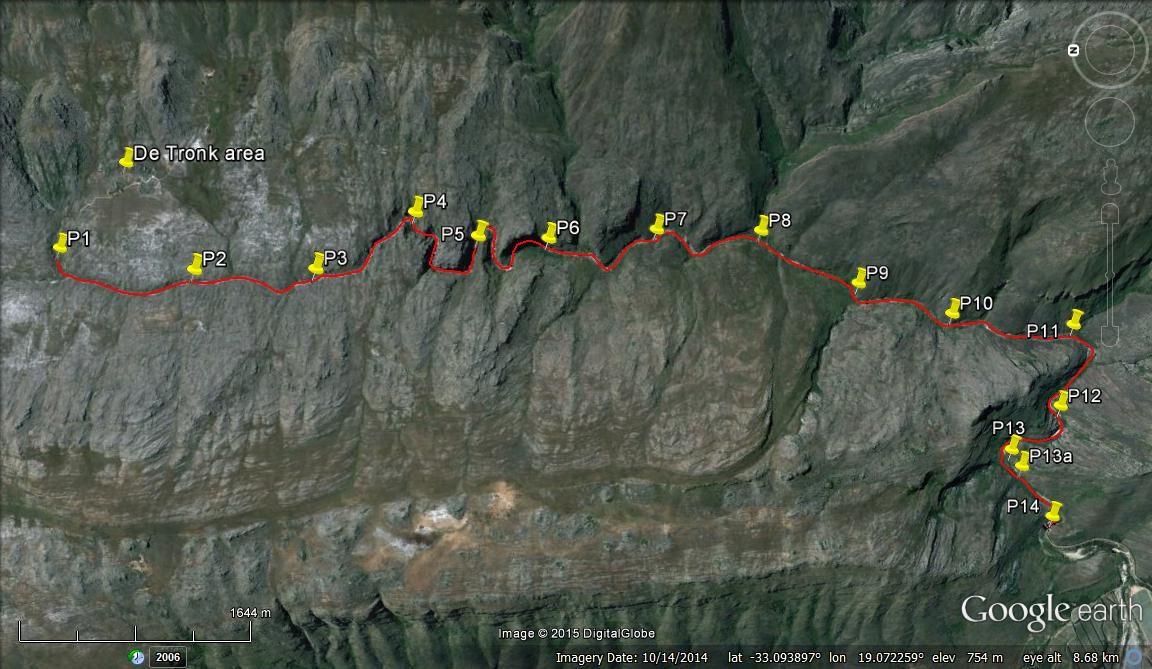River expedition yields some encouraging findings


A typically idyllic view of a section of the upper Twenty-four Rivers system, complete with large boulders, Palmiet (Prionium serratum) amongst the foreground rocks and ubiquitous Cape gum (Metrosideros angustifolia) in the distance (Photo: S. Jack)
Two months back, Sam Jack and Greg Nicolson undertook a 3 day expedition to sample the vegetation of the Twenty-Four Rivers system, and after analysing the data they collected, have found some encouraging results. Sam is a research assistant here at the PCU and Greg is a past PCU MSc student now working as a specialist botanist.
The perennial Twenty-four Rivers system, which is fed by the Groot and Kleinkliphuis Rivers, drains the extensive high-elevation plateau of the Grootwinterhoek Wilderness Area, managed by Cape Nature. As well as a home to unique and species rich mountain fynbos, these uplands are an important water catchment area, directly supplying water for lowland agriculture in the vicinity of Saron, to the east of the Groot and Kleinwinterhoek mountains.
The aim of the expedition was to conduct a basic survey of the riverine vegetation of the Twenty-four Rivers. Over a three day period, Sam and Greg hiked down the length of the river, stopping at 1 km intervals to do their sampling. At each sampling station they recorded which three non-aquatic riverine species had been most dominant during the preceding kilometre and took panoramic photographs of both upstream and downstream river views. They also maintained a checklist of species between sampling stations.
From this survey they recorded a total of 31 different species, representing 22 different families. Although they note that this is not a comprehensive list, it is likely to represent the most abundant species occurring within the river channel. Metrosideros angustifolia (Cape gum/Smalblad) was the overwhelmingly dominant riverine species throughout the studied section, despite physical differences between upper and lower sections of the river. Exotic species were notably absent for most of the studied section of river, but were present as single individuals (Pinus sp.) or discreet clumps (Acacia mearnsii). These are just some highlights of their findings, which were written up as a more comprehensive report and handed to the Cape Nature management team at Grootwinterhoek.
The end result – good news! They concluded that the Twenty-Four River system is in good health and little intervention is needed at this time, save for the removal of isolated exotic species. They did however recommend that a more regular monitoring programme should be considered to help maintain the system in its current state.

Surveyed section of Twenty-four Rivers indicating sampling stations at 1 km intervals. The map is oriented due east.
Article by Sam Jack & Esther Mostert
